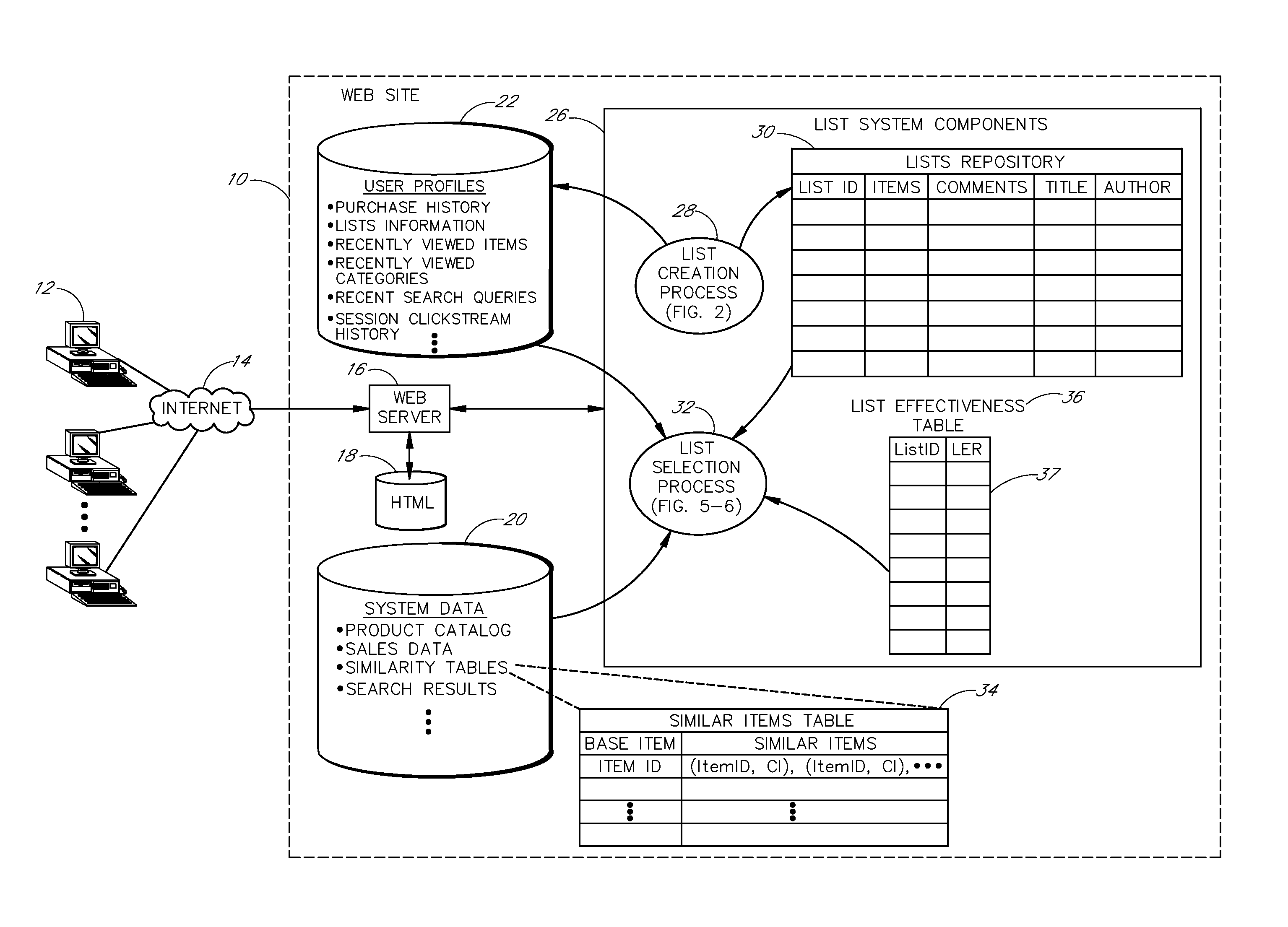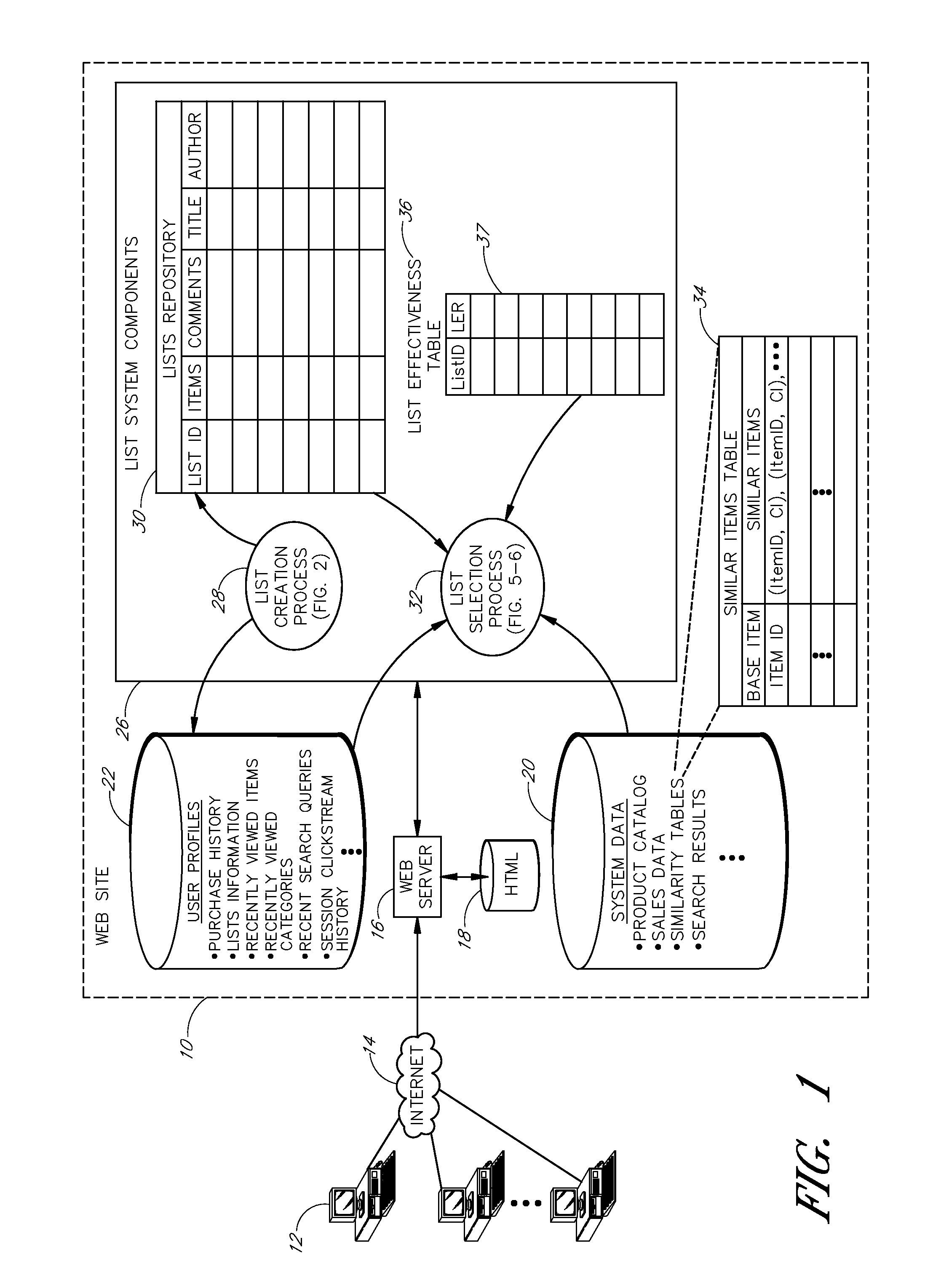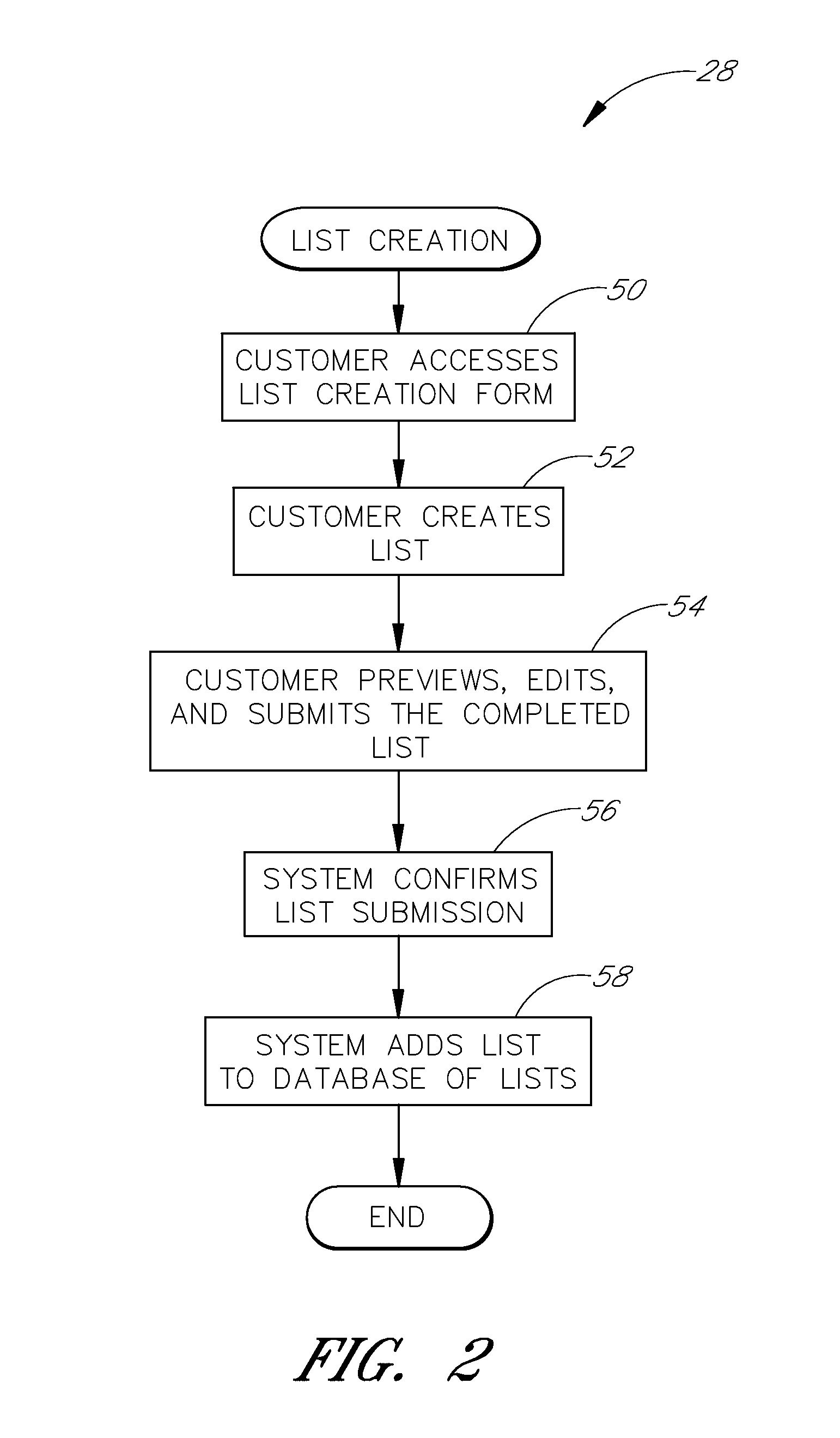Service for accepting and selectively exposing user-created lists of items
a user-created list and service technology, applied in the field of information filtering and data mining, can solve the problems of missing several elements of a “normal” shopping experience, no chance to interact with other customers about the products in the store, no chance to share opinions and experiences
- Summary
- Abstract
- Description
- Claims
- Application Information
AI Technical Summary
Benefits of technology
Problems solved by technology
Method used
Image
Examples
Embodiment Construction
[0060]To facilitate a complete understanding of the list system, the remainder of the detailed description describes the list system with reference to the figures, wherein like elements are referenced with like numerals throughout. Although the list system is described below in the context of a website, it will be recognized that the system may also be incorporated into an online services network, an interactive television system, a system in which customers browse an electronic catalog using in-store terminals, or other type of interactive system.
System Configuration
[0061]FIG. 1 depicts one embodiment of a website 10 that implements the list system. The arrows in FIG. 1 show the general flow of information that is used by the list system. A skilled artisan will recognize that FIG. 1 is not intended to limit the large number of potential configurations of website components encompassed by the list system.
[0062]As illustrated by FIG. 1, computer users 12 access the website 10 via the...
PUM
 Login to View More
Login to View More Abstract
Description
Claims
Application Information
 Login to View More
Login to View More - R&D
- Intellectual Property
- Life Sciences
- Materials
- Tech Scout
- Unparalleled Data Quality
- Higher Quality Content
- 60% Fewer Hallucinations
Browse by: Latest US Patents, China's latest patents, Technical Efficacy Thesaurus, Application Domain, Technology Topic, Popular Technical Reports.
© 2025 PatSnap. All rights reserved.Legal|Privacy policy|Modern Slavery Act Transparency Statement|Sitemap|About US| Contact US: help@patsnap.com



